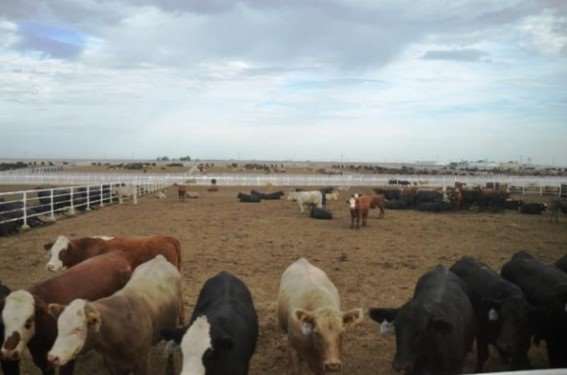By A.J. Tarpoff

Lameness is a significant disease challenge in feedlot cattle. It has been estimated that 16% of all treatments, 5% of deaths, and 70% of animals for railer slaughter is due to lameness. One cause of lameness that often goes underdiagnosed is toe abscesses. This issue goes by a number of different names such as toe tip necrosis or P3 (third phalangeal bone) necrosis. It can affect heifers, steers, calves, and yearlings. They typically occur and present during the first 3 weeks after arrival into the feedlot. Toe abscesses can occur on any foot, but tend to be more common on the rear feet.
Cause
This disease process is most commonly seen in young cattle coming into the feedlot from wet lush pastures. Although several other factors can play a role in this disease. Wet soft conditions can lead to softening of the sole tissue predisposing the foot to damage. But rough frozen ground with sharp edges can also be a factor. Flighty cattle or poor cattle handling can also be a culprit. Couple that with rough concrete flooring that can grind off layers of sole, and it leads to prime conditions for toe abscesses to occur. Standing long periods of time on concrete floors, as well as sharp metal edges in the floors of working facilities have also been indicated as the cause of toe abscesses. Bacteria invades the underlying tissue once the sole has been separated from the hoof. As the infection sets in, the bone in the foot may be involved. If left untreated, the infection will spread up the leg and can cause multiple abscesses in different areas of the body.
Diagnosis
Toe abscesses are a very painful condition. Cattle will tend to stand in abnormal positions to take pressure off of the affected toe. They may appear simply stiff and show signs of shifting lameness. The source of the lameness is difficult to see due to no signs of swelling. Finding the affected toe requires an examination of the foot. Lifting the foot with soft nylon rope and a pulley off the chute may be the most effective way to conduct this exam. The toe with the abscess will be very painful. Applying pressure with hoof testers, or even a large set of pliers, to the effected toe will cause the calf to immediately pull away. Upon closer examination slight separation of the sole and the hoof wall may be evident. As the disease progresses, swelling will begin to appear on the coronary band (just above the hoof) on the effected toe.
Click here to see more...